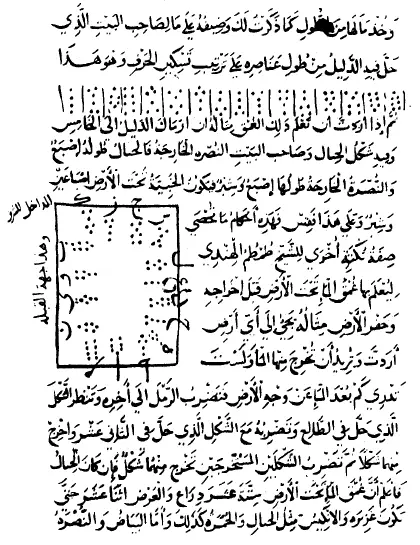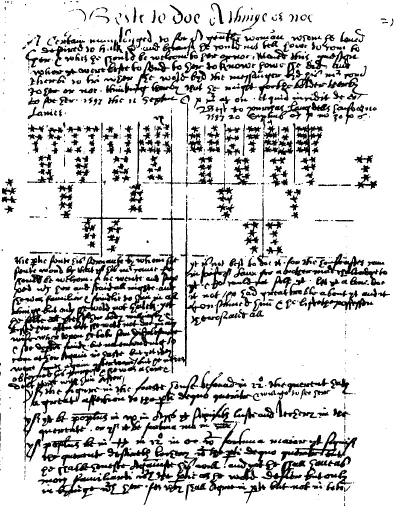Geomancy
Geomancy is a forgotten form of divination that once enjoyed considerable popularity, beaten only by the ever-popular astrology. In modern times, it is rarely used or discussed, but for the beginner diviner, is one of the easiest systems to understand due to its simplicity.
History of Geomancy
 Geomancy could have been mentioned as early as Archimedes’ time, where he reportedly drew figures in the sand to determine the outcome of the siege of Syracuse, but if these figures are related to the current figures is unknown. The most likely source of modern geomancy is the Arabic world, where it was imported into Europe. Arabic ‘ilm al-raml, or raml, consisted of sixteen figured derived by making random points in the sand, which was written down and put onto a board. Raml shares many similarities with modern geomancy, and raml was likely the inspiration for similar systems in Africa such as fa, ifa and sikidy.
Geomancy could have been mentioned as early as Archimedes’ time, where he reportedly drew figures in the sand to determine the outcome of the siege of Syracuse, but if these figures are related to the current figures is unknown. The most likely source of modern geomancy is the Arabic world, where it was imported into Europe. Arabic ‘ilm al-raml, or raml, consisted of sixteen figured derived by making random points in the sand, which was written down and put onto a board. Raml shares many similarities with modern geomancy, and raml was likely the inspiration for similar systems in Africa such as fa, ifa and sikidy.
 The earliest confirmed form of geomancy in Europe is from the Ars Geomantiae by Hugh of Santalla sometime in the early 1100s. Geomancy exploded in popularity throughout the Middle Ages and Renaissance, with authors like Cornelius Agrippa, Christopher Cattan, and John Heydon wrote geoma ntic texts such as On Geomancy, The Geomancy of Maister Christopher Cattan, and Theomagia respectively. Geomancy was a popular alternative to astrology, where it takes much inspiration from. Considering the amount of math involved to generate a astrological chart, it was too much for the common person to afford, but geomancy only requires simple addition to generate. However, with the rise of rationalism in the 18th century, geomancy, along with many other forms of divination, faded into obscurity as people pursued science.
The earliest confirmed form of geomancy in Europe is from the Ars Geomantiae by Hugh of Santalla sometime in the early 1100s. Geomancy exploded in popularity throughout the Middle Ages and Renaissance, with authors like Cornelius Agrippa, Christopher Cattan, and John Heydon wrote geoma ntic texts such as On Geomancy, The Geomancy of Maister Christopher Cattan, and Theomagia respectively. Geomancy was a popular alternative to astrology, where it takes much inspiration from. Considering the amount of math involved to generate a astrological chart, it was too much for the common person to afford, but geomancy only requires simple addition to generate. However, with the rise of rationalism in the 18th century, geomancy, along with many other forms of divination, faded into obscurity as people pursued science.
Geomancy would see a slight revival in the early 20th century with the Golden Dawn, whose alumni Franz Hartmann and Israel Regardie would write modern texts on geomancy. Aleister Crowley too dabbled in geomancy, but was reported to not have liked it.
Before any reading is able to be done, the diviner must learn how to cast a geomantic chart.
What Geomancy is Not
Geomancy is a term that is applied to many different occult facets, including divination by cracks in the ground, divination by earthquakes, ley lines, and feng shui. Geomancy (that is, Arabic geomancy) is a system of dotted figures from which meaning is derived. It is similar to the Chinese I Ching, except while I Ching has sixty-four figures to memorise, geomancy only has sixteen.